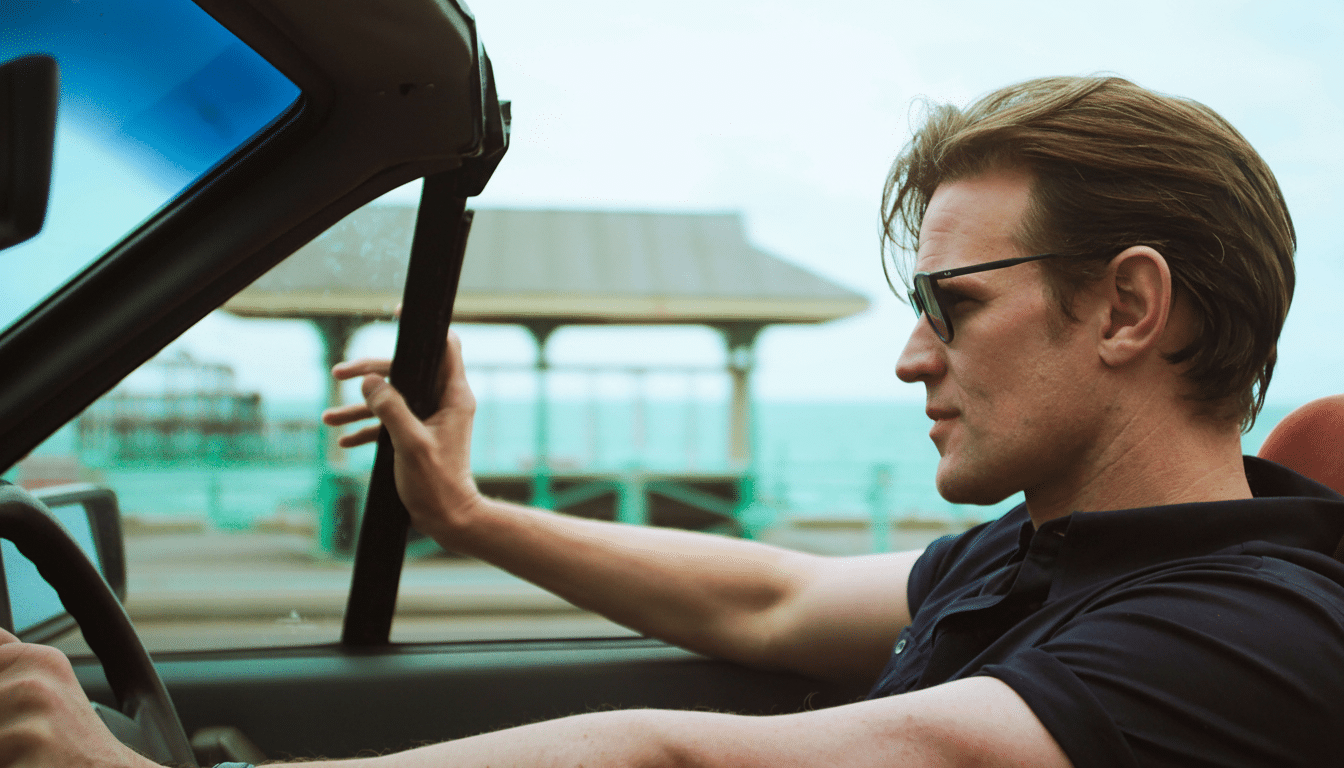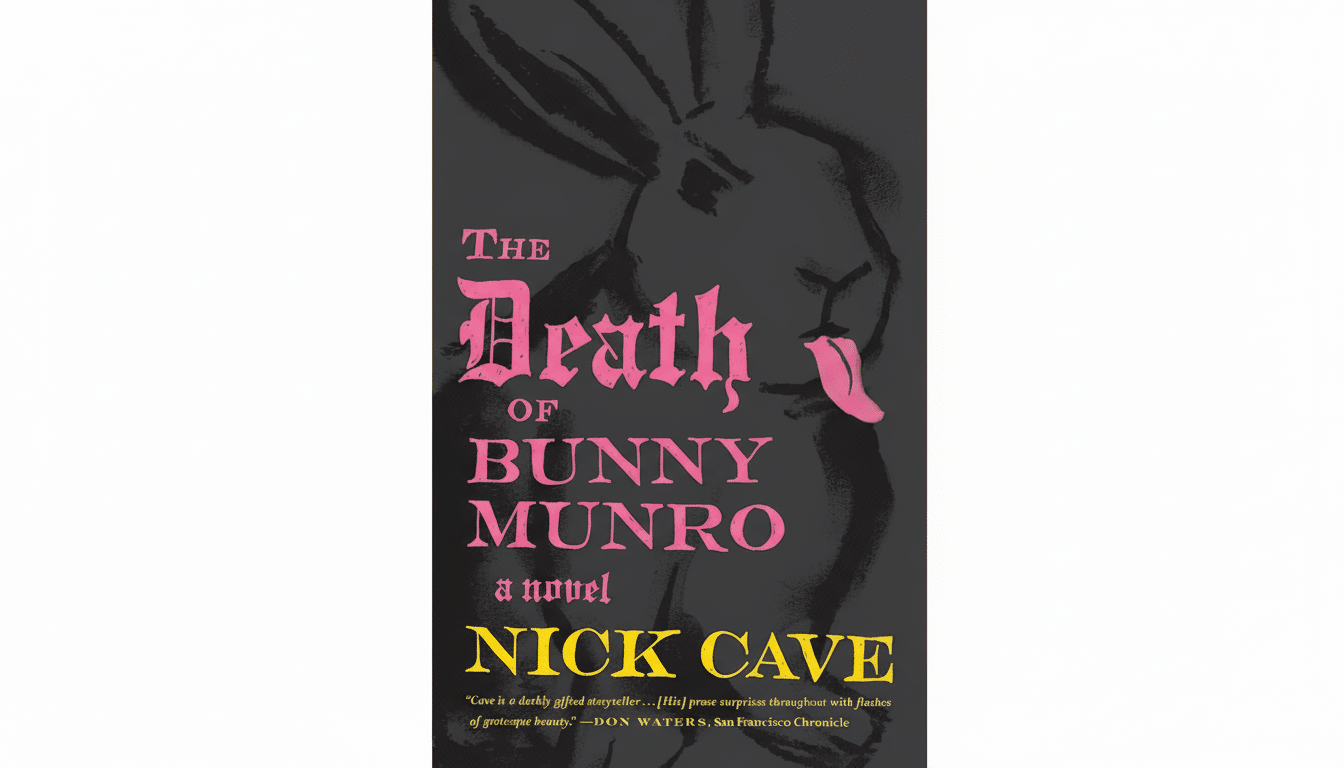Nick Cave’s brazen 2009 novel has made the transition to the small screen in a six-part adaptation of The Death of Bunny Munro, led by Matt Smith and boasting an imposing line-up behind it.
Made by Clerkenwell Films for Sky, the series takes Cave’s most polarizing protagonist and turns him into a compelling character study within the neon sadness of Brighton.

If you’re wondering what to keep in mind ahead of watching, here are four indispensable things to know that cast the show’s tone, ambition and pedigree.
1. It Turns Nick Cave’s Provocative Novel Into TV
Cave’s second novel trails the path of a traveling salesman, Bunny Munro, whose compulsions detonate his marriage and trap him on a madcap road trip with his young son. The story is raw, coarse and frequently very funny, but its motor is grief and denial — a father clutching at fictions as everything else gets stripped away.
The screen version relishes that contradiction. And it maintains the book’s gallows humor and moral queasiness while adapting a largely interior narrative into event-driven television. Cave first imagined Bunny as a screenplay following The Proposition for John Hillcoat; when no studio would bite, he turned it into the 2009 novel. The series neatly closes that long loop back to the screen.
Look for a road story that doubles as a reckoning. The setting of Brighton is not window dressing; it is a part of the text and, with its coastal seediness and late-night glare, reflects Bunny’s frayed inner life.
2. Matt Smith Stars as a Risky, Rowdy Character Study
Smith, an Emmy nominee for The Crown and beloved for Doctor Who, revels in the barb of Bunny. His acting tilts toward the physically slack and verbally rushy, a man who is selling all the time — exploiting himself, his product’s efficacy, an illusion of charm — while keeping at bay what terrifies him. It’s the sort of role that can curdle if played without nuance; the show’s trick is letting us see the damage without requiring absolution.
The ensemble adds crucial ballast. Sarah Greene brings serrated tenderness as Bunny’s wife, Libby; Lindsay Duncan exudes the withering judgment of a mother-in-law who sees through him; Johann Myers is a wry foil as Poodle; and newcomer Rafael Mathé shines as Bunny Junior, the tale’s quiet conscience.
The depiction of compulsive sex addiction could generate conversation. Sex addiction, not a condition recognized in the DSM-5, is deemed a type of impulse-control disorder in its own right by the World Health Organization’s ICD-11. And that distinction matters: The series positions Bunny less as a libertine than as a man ruled by an inability to stop, with the fallout landing on everyone around him.

3. The Tone Is Set by Isabella Eklöf and Pete Jackson
The series is directed by Isabella Eklöf, the unnerving Holiday director, who has a strong knack for moral discomfort and for the way desire and power twist banal moments. Her Brighton is bright and bruised — sunlit storefronts during the day, sodium-lit vortices at night — commensurate with Bunny’s alternation between sales patter and spiraling conscience.
The screenwriter Pete Jackson (Somewhere Boy) works closely with Cave to maintain the author’s mordant wit while giving the plot a sturdier spine. The interior monologue of the book becomes action: small catastrophes compound, options are limited and the father–son narrative tightens. It’s a functional move for TV and one that allows the series to elude the pitfall of being just a collection of “tawdry events.”
That suggests Clerkenwell Films is at home with delicate characters and tonal tightropes — its back catalogue of dark comic drama includes Misfits, The End of the F***ing World, and recent breakout Baby Reindeer. That kind of experience shows in the pacing and the patience to allow silence, rather than chatter, to do some of Bunny’s most awful realizations.
4. Cave and Warren Ellis Score It With Eerie Accuracy
Returning collaborators Nick Cave and Warren Ellis provide an original score that does the heavy thematic lifting. Their past work, which includes The Assassination of Jesse James by the Coward Robert Ford, The Road, and Lawless, relies on lonesome motifs and hanging strings and piano figures that ache more than announce. You can expect that same muted intensity here, too — Bunny’s swagger will be a low, unsettling hum.
Music is also the connective tissue between Cave the novelist and Cave as a performer. It links source and screen, transforming scenes that could be read as provocation into instances of familiar human drift. It’s not actually a matter of softening Bunny; it’s about letting him hear what he is drowning out.
Viewers can watch in the UK on Sky Atlantic and NOW, with more territories to follow through the out-of-home service run by Sky’s international partners. The series got its first preview during the London Literature Festival, appropriately enough for a project that started as some rather unruly typing on the page and has made its way back — at last! — to those bright lights.
The Death of Bunny Munro is not comfort TV. It’s dirty, mordant, and occasionally abrasive. But in the hands of Smith, Eklöf, Jackson, and the Cave–Ellis duo it’s something rarer on television: a bruised father–son odyssey that stares down denial and lets us decide what — if anything — redemption would look like.

